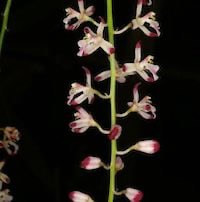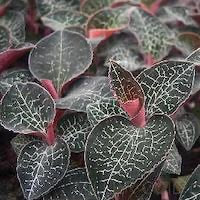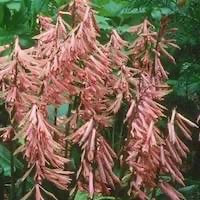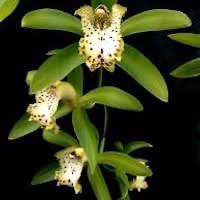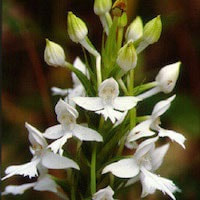MOR1- Men's Oriental 1 - Aphrodisiac
|
Native Singaporean Orchid notes: Catasetum Integerrimum
Catasetum Integerrimum -
Catasetum integerrimum, native to Mexico and Central America, stands out in the Oriental 1 (Men) Team Building Perfume Workshop for its spicy fragrance and unique attributes. The orchid’s flowers, resembling monks in cowls, are visually distinctive and emit a captivating scent. Notably, its male flowers employ an "explosive pollination" strategy, ejecting pollinia forcefully to ensure efficient cross-pollination by insects. This adaptation underscores the orchid's specialized relationship with pollinators and its ecological significance. The workshop leverages these insights to educate participants on plant-insect interactions crucial for orchid conservation, advocating for the protection of these vulnerable species worldwide. |
Therapeutic Orchid notes:
|
Acriopsis liliifolia
Acriopsis liliifolia, known as Anggerek darat, Sakat Ubat Kepialu, or Pemolek in Malay, thrives in Southeast Asia's lowland forests and along roadsides. Its genus name, derived from Greek, hints at its locust-like appearance. Ants play a crucial role in its ecology, tending gardens around its pseudobulbs and aiding in seed dispersal by transporting lipid-coated seeds to new locations. In traditional medicine, it has been used across the region: as a fever reducer in Malaya, an earache remedy in Indonesia, and a treatment for rheumatism in India's Western Ghats. While valued in folklore, its medicinal properties require further scientific validation. Conservation efforts are vital to safeguard Acriopsis liliifolia and its ecological contributions. |
|
Anoectochilus formosanus Hayata
Anoectochilus formosanus, also known as the gold thread orchid, grows in Taiwan and the Ryukyu Islands in forests and bamboo areas at elevations from 500 to 1500 meters. It is esteemed in Traditional Chinese Medicine (TCM) under multiple names like Jinxian Lan and Benshanshisong. Used widely, it's valued for cooling blood and liver health, detoxification, and treating ailments such as tuberculosis, diabetes, and kidney infections. Research identifies several beneficial compounds like quercetin and isorhamnetin derivatives, contributing to its medicinal reputation. However, further scientific inquiry is needed to fully validate its health benefits and safety. |
|
Cremastra appendiculata (D. Don) Makino Syn. Crematra variabilis (Blume) Nakai; Cym- bidium wallichiana Lindl.
Cremastra appendiculata, known as the horse whip orchid, has multiple names across Chinese, Japanese, and Korean cultures, such as Mabian Lan, Dujuan Lan, Shancigu, Maocigu, Sandangu, Sai-hai ran, Sanjiko, and Sanjago. Rich in bioactive compounds like 5,7-dihydroxy-3-(3-hydroxy-4-methioxybenzyl)-6-methoxychroman-4-one, it shows anti-inflammatory, anti-allergic, and tyrosinase-inhibiting properties beneficial for skin health and UV protection. In traditional Chinese medicine, its stem treated impotence, fever, and snake bites, while the Ainu in Japan used the pseudobulb for toothaches and bites. Though promising for cancer treatment, more research is needed to confirm its medicinal uses and safety. |
|
Cymbidium hookerianum Rchb. f.
Cymbidium hookerianum, known as Hutou Lan, is an orchid species used in traditional Chinese medicine and India. It blooms in China from January to April and from February to May in Bhutan. In India, its seeds are applied to cuts for their haemostatic properties, stopping bleeding. Traditional Chinese medicine uses the whole plant from Yunnan province to treat fractures and soft tissue injuries, aiding in bone and tissue healing. Scientific research is needed to confirm its effectiveness, safety, and potential health benefits before widespread use. Consulting healthcare professionals is advised before using Cymbidium hookerianum or any herbal remedy. |
|
Habenaria dentata (Sw.) Schltr.
Habenaria dentata, also known as feather jade phoenix flower or white phoenix orchid, is found across East Asia and Southeast Asia, including Taiwan, Hong Kong, southern China, and parts of Southeast Asia. In traditional Chinese medicine (TCM), its stems are used for treating lung and kidney issues, acting as a diuretic, anti-inflammatory, and detoxifying agent. They are used for conditions such as weak kidneys, impotence, orchitis, dysuria, swollen kidneys, carbuncles, and tuberculosis-related coughs. Scientific research is needed to confirm its medicinal effectiveness, safety, and potential health benefits. Consulting healthcare professionals is recommended before using Habenaria dentata or any herbal remedy. |
Other scent note
Scentopia Library Reference ingredient
Rosemary - Check details at Scentopia's scent library
Download the guided mediation that works best with this Orchid fragrance oi
| men_oriental_essential_oil_orchi_00001.mp3 | |
| File Size: | 114753 kb |
| File Type: | mp3 |

